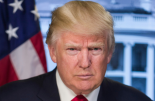Payden & Rygel: US Interest Rates
Payden & Rygel: US Interest Rates

A preview of this week’s meeting of the US Federal Reserve Open Market Committee (30th-31st July).
First, a July cut is unlikely. We’ve only had two months (May and June) of core inflation that is in line with the Fed’s 2% target. With the U.S. economy growing at a 2.8% annualized rate in the second quarter of 2024, the view that the Fed urgently needs to reduce rates to stave off an economic downturn seems misplaced.
Second, June’s core Personal Consumption Expenditures Price Index rose just 0.2% over the month. The three-month average rate of change in the core PCE index is now 0.19%—a trend rate consistent with the Fed’s 2% target. If the current trend continues, core inflation will be in line with the Fed’s forecast at 2.8% by December 2024 and fall quickly to 2.3% by mid-2025.
Third and consequently, we expect Chair Powell to give some forward guidance for a rate cut in September. Specifically, like what Governor Chris Waller has outlined in his 'Getting Closer' speech, in the scenario where inflation continues to moderate in line with its current three-month trend, it’s possible that the Fed would be able to reduce policy restrictiveness in September. However, if the path proves choppier, 'a rate cut in the near future is more uncertain'. In other words, while a September cut is likely, it’s not a 100% guarantee.
Lastly, we think policymakers interpret the recent rise in the unemployment rate as the labor market coming into better balance instead of a sign of an imminent recession, as some investors have claimed. As Governor Chirs Waller has iterated, the labor market is not breaking up but rather in a 'sweet spot', where labor supply is catching up, and elevated demand has been slowly rising from its peaks. Unless the unemployment rate begins increasing rapidly (which we are not expecting to happen), the Fed will focus on inflation as its primary goal, although the risks on both sides now are more balanced.
Looking farther ahead, if the economy continues to grow and the unemployment rate stays low, it’s unlikely the Fed will engage in a substantial easing campaign, instead just “fine-tuning” the fed funds rate. So, market expectations for seven cuts through 2025 are probably too aggressive.
Bottom line: A September cut is likely if inflation can trend sustainably toward 2%, as the Fed’s goal is not to sink the economy but to wrangle inflation. However, the Fed is in no hurry to cut rates, and given a still-tight labor market and above-trend economic growth, we see more of a 1990s-style 'fine-tuning' of the federal funds rate.









